Imagine stepping into a world where your plants thrive regardless of the season, where the air is rich with the scent of fresh herbs, and vibrant blooms greet you at every turn. This dream becomes a reality when you delve into the rewarding practice of greenhouse gardening. Whether you’re just getting your hands dirty for the first time or you already have a collection of green-thumb accolades, nurturing a greenhouse garden opens up a realm of possibilities that extend beyond traditional gardening. It offers a sanctuary for both plants and gardeners, providing a controlled environment where you can experiment and grow all year round.
The allure of greenhouse gardening stems from its ability to transform even the most challenging climates into an oasis of growth and abundance. You’ll soon discover the joys of cultivating a diverse array of plants, from exotic flowers to tender vegetables, all shielded from the unpredictable whims of the weather. In this article, we’ll guide you through the essentials of establishing your own greenhouse garden, offering insights on everything from choosing the right structure to selecting the ideal plants for your space. With practical tips and expert advice, you’ll gain the confidence to start your greenhouse journey and watch your garden flourish.
This journey will not only enhance your gardening prowess but also provide a deeper connection to the natural world, fostering a sense of accomplishment and serenity. By the end of this guide, you’ll be equipped with the knowledge to maintain a thriving greenhouse environment, ensuring your plants are healthy and productive. Whether you’re motivated by the promise of year-round harvests or the therapeutic escape a greenhouse provides, this article will serve as your trusted companion. Let’s embark on this green adventure together, where every page turn promises a new opportunity to cultivate beauty and sustenance right at your fingertips.
Choosing the Ideal Greenhouse Type
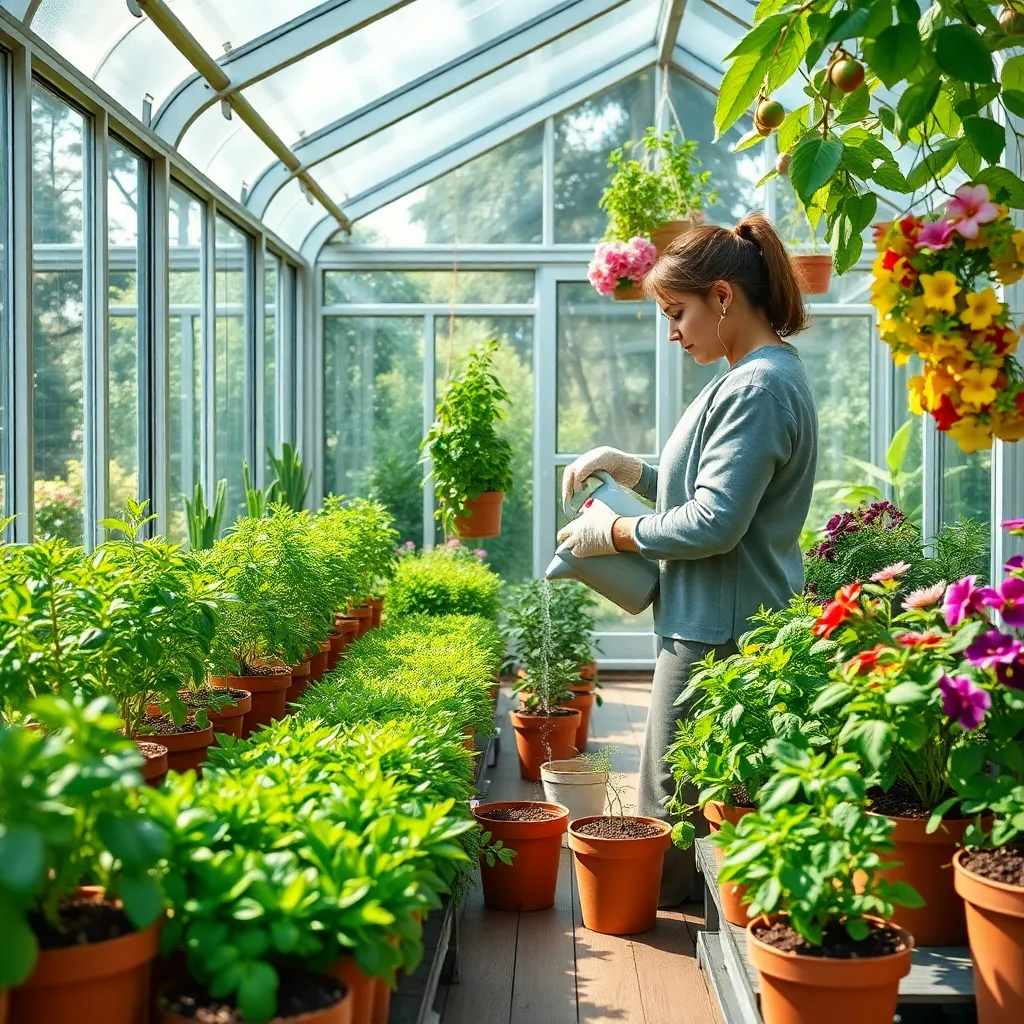
Deciding on the ideal greenhouse type for your garden involves understanding your climate and the specific plants you intend to grow. Consider the size and design that best suits your space—whether a compact lean-to or a freestanding structure—ensuring it fulfills your gardening ambitions.
For beginners, starting with a polyethylene-covered hoop house can be both cost-effective and efficient. These structures are easy to assemble and maintain, providing ample protection from harsh weather while allowing for controlled growth conditions.
Advanced gardeners might explore investing in a glass or polycarbonate greenhouse, which offers superior insulation and light transmission. These materials help maintain a stable environment, ideal for growing sensitive plants like orchids or starting seeds early in the season.
Regardless of the type, ensure your greenhouse has adequate ventilation to prevent overheating and promote healthy plant growth. Installing adjustable vents or fans can significantly enhance air circulation, reducing the risk of mold and pest infestations.
Essential Greenhouse Equipment and Tools
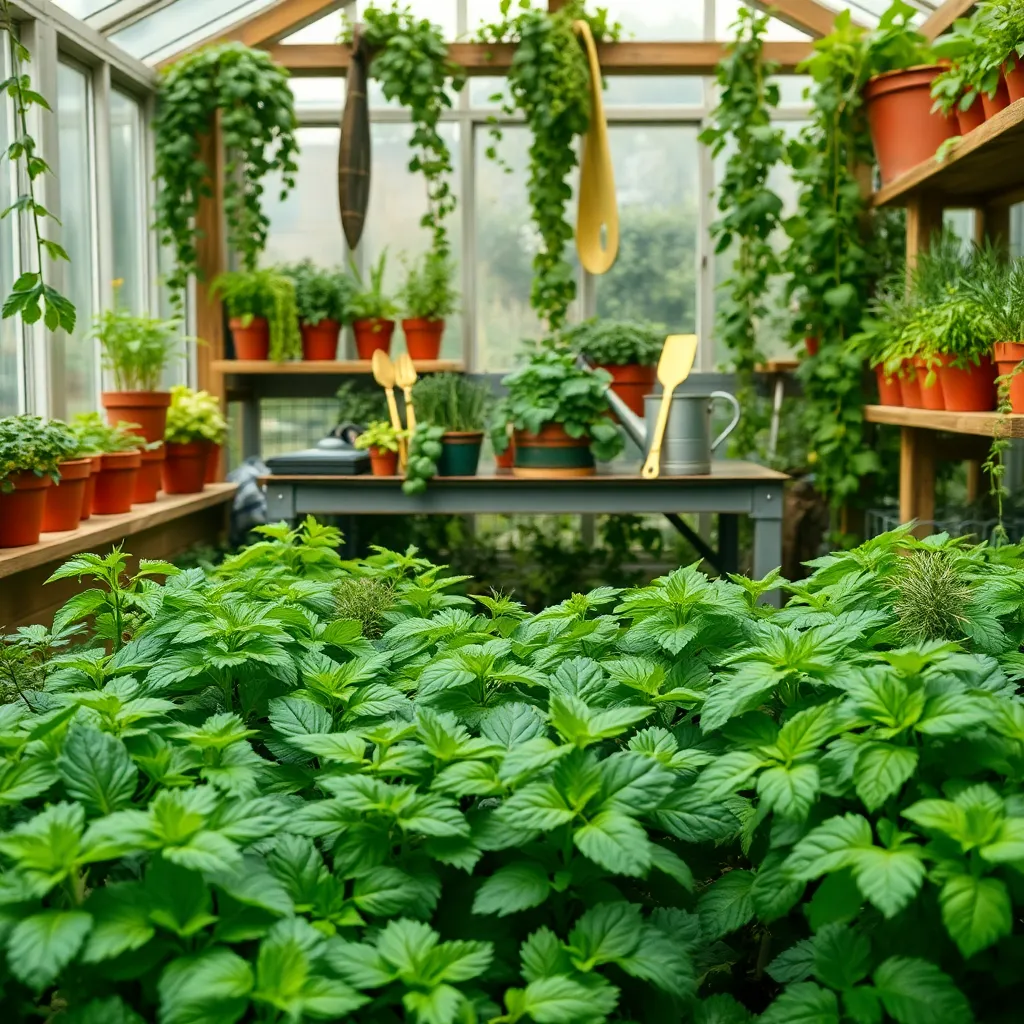
Creating an optimal greenhouse environment starts with acquiring essential equipment and tools. Temperature control is critical, so invest in a reliable thermometer and hygrometer to monitor heat and humidity levels accurately.
Ventilation is another crucial aspect of greenhouse gardening. Consider installing automatic vent openers that react to temperature changes, ensuring your plants receive the perfect balance of fresh air.
For efficient watering, a drip irrigation system can be a game-changer, providing consistent moisture without overwatering. These systems can be customized to suit the specific needs of your plants and reduce water waste.
Lighting is vital for plant growth, particularly in regions with shorter daylight hours. Opt for LED grow lights that mimic natural sunlight, promoting healthy plant development while being energy efficient.
A potting bench or workstation within your greenhouse can greatly enhance your gardening experience. This dedicated space enables you to organize tools and supplies, making tasks like potting, sowing seeds, and transplanting more efficient and enjoyable.
For those looking to maximize their greenhouse’s potential, consider adding shelving or staging. These additions allow for vertical growing space, helping you manage plants of varying heights while optimizing sunlight exposure.
Optimal Plant Selection for Greenhouses
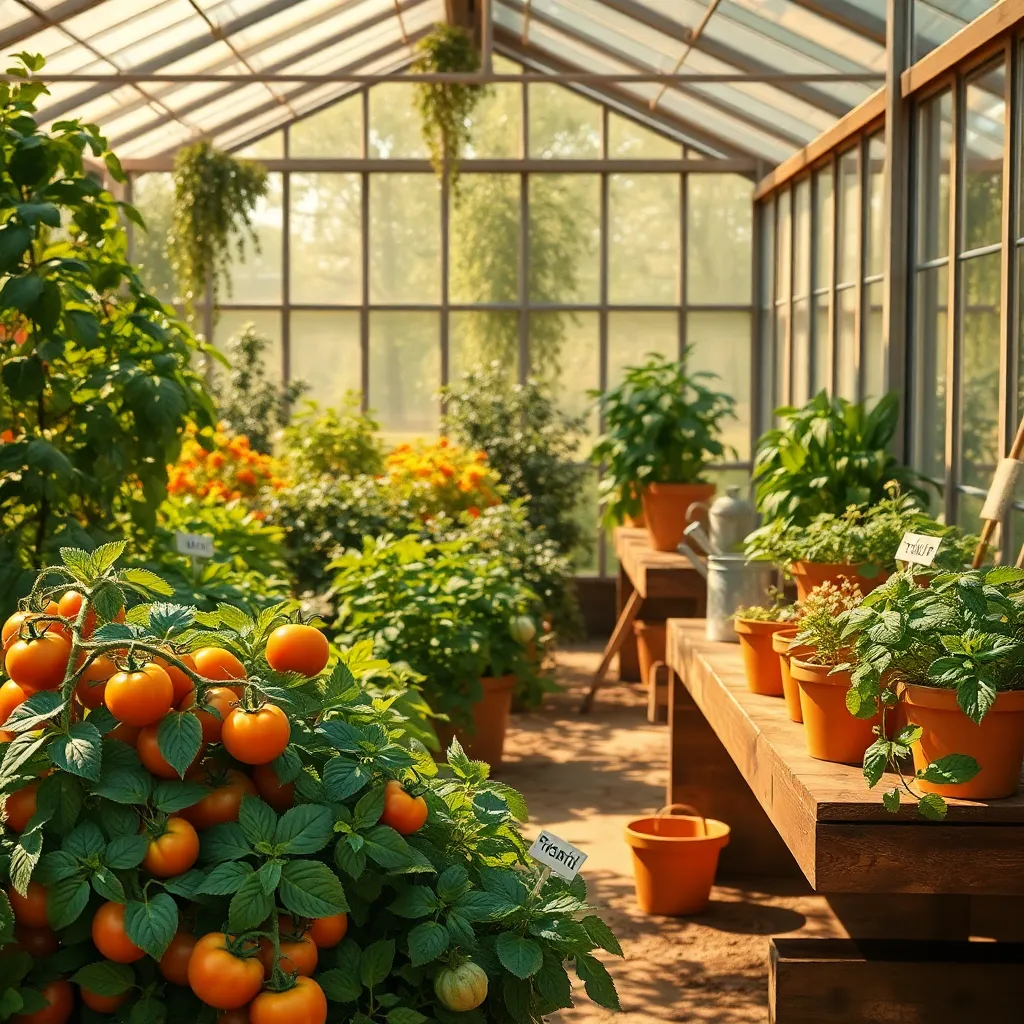
When selecting plants for your greenhouse, consider species that thrive in controlled environments. Beginner-friendly options such as tomatoes, peppers, and herbs are excellent choices due to their adaptability and relatively simple care requirements.
It’s important to match plants with your greenhouse’s climate, paying close attention to temperature and humidity levels. Cucumbers and eggplants prefer warmer, humid atmospheres, while leafy greens like lettuce and spinach thrive in cooler conditions.
For those looking to take their greenhouse gardening to the next level, try incorporating exotic plants like citrus trees or orchids. These plants require more specific care, including precise watering schedules and specialized soil mixtures, but they can yield rewarding results for experienced gardeners.
Regularly monitor and adjust environmental controls to maintain the optimal growing conditions for your chosen plants. Make use of shade cloths, heating systems, or ventilation as needed to ensure your plants are not exposed to extreme temperatures.
Managing Greenhouse Temperature and Humidity
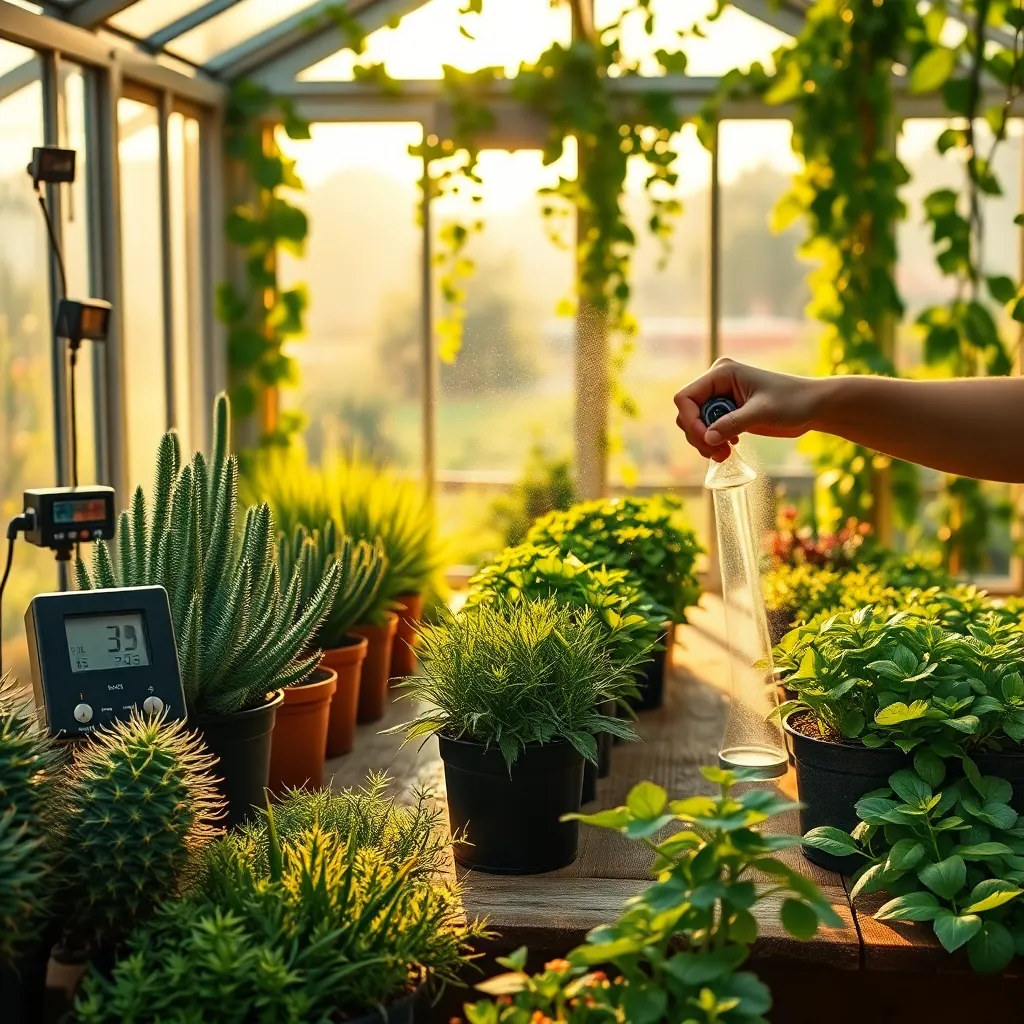
Managing greenhouse temperature and humidity is crucial for the healthy growth of your plants. Consistent monitoring of these conditions will help create an optimal environment for your greenhouse garden.
Begin by installing a reliable thermometer and hygrometer to measure the temperature and humidity levels. These tools offer real-time data, allowing you to adjust conditions as needed to ensure your plants thrive.
To maintain the ideal temperature, consider using a combination of ventilation and shading techniques. Opening vents or windows during the day can help regulate heat, while shade cloths can prevent overheating during intense sunlight.
Humidity control is equally important; too much moisture can lead to mold, while too little can stress plants. Use a misting system or place trays of water near plants to increase humidity, and ensure proper ventilation to reduce excess moisture.
Advanced gardeners might explore installing an automated climate control system, which can adjust conditions based on preset parameters. This investment not only saves time but also provides a more stable environment for sensitive plant species.
Regularly check plants for signs of stress such as wilting, yellowing, or mold, as these can indicate imbalances in temperature or humidity. Making small adjustments promptly will keep your greenhouse garden thriving and productive.
Pest Control Strategies for Greenhouses
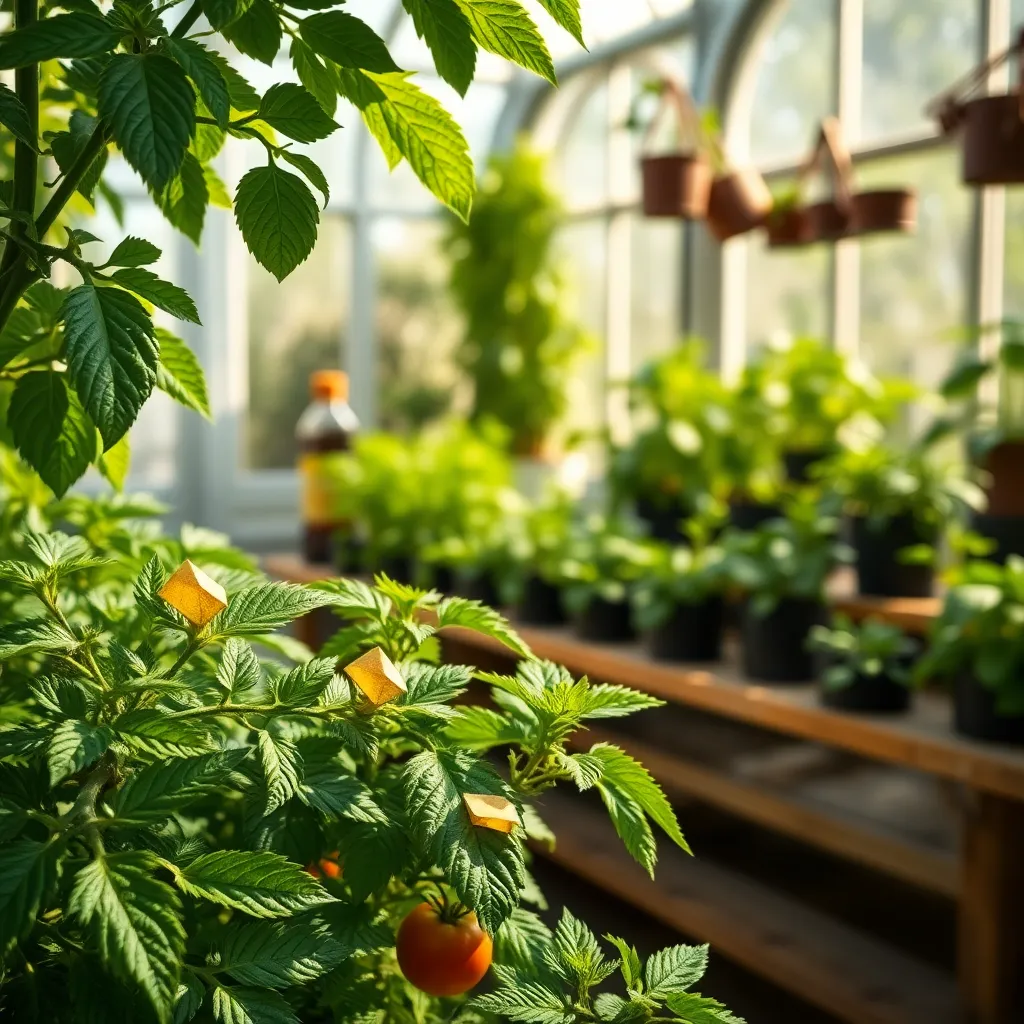
Effective pest control in greenhouses begins with regular monitoring and identification of potential pests. Set up yellow sticky traps around the greenhouse to catch and identify flying insects, such as whiteflies and aphids, which can be common issues.
Once pests are identified, consider using integrated pest management (IPM) strategies that combine different control methods. For instance, releasing beneficial insects like ladybugs can naturally reduce aphid populations without harming your plants.
Maintaining good cultural practices is another key strategy to prevent pest infestations. Keep your greenhouse clean by regularly removing plant debris and weeds, which can harbor pests and diseases.
In addition to biological controls, applying neem oil or insecticidal soap can effectively manage soft-bodied insects when used correctly. Always follow the manufacturer’s instructions and test on a small plant area first to avoid any potential damage.
For more persistent infestations, consider using natural barriers like row covers to protect young plants. Ensure that these covers are removed during pollination periods if needed, to allow beneficial insects to access flowers.
By implementing a combination of these strategies, you can create a thriving and pest-resistant greenhouse environment. Remember, the key is regular monitoring and a proactive approach to pest management.
Conclusion: Growing Success with These Plants
In nurturing a thriving relationship, much like tending to a greenhouse garden, we explored five pivotal concepts: the importance of consistent nurturing, the value of patience, the necessity of clear communication, the art of compromise, and the power of shared goals. These elements cultivate a resilient bond that flourishes over time. As a proactive step, consider setting aside just 15 minutes today to have a heartfelt conversation with your partner, focusing on one area where you can grow together.
Remember, every relationship is a living entity that requires attention and care. Save or bookmark this article as your go-to guide for relationship gardening, ensuring you have these insights at your fingertips whenever you need a gentle reminder or fresh inspiration.
Looking ahead, remember that with dedication and mutual effort, your relationship can grow into a beautiful, enduring partnership. You have the tools to create a loving, vibrant connection that can weather any season. Embrace this journey with optimism and enthusiasm, knowing that every small action you take today lays the foundation for a stronger relationship tomorrow.
